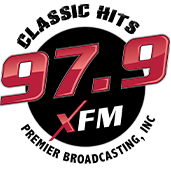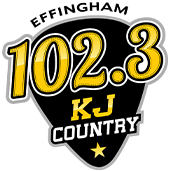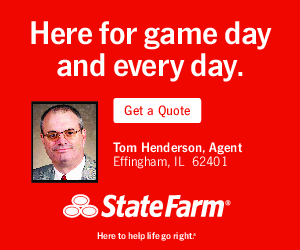Chicago Cubs Fans Celebrate at Parade
Published on November 7 2016 6:28 am
Last Updated on November 7 2016 6:28 am
By Bradford Doolittle
ESPN Staff Writer
They came from every direction, on buses and trains, in cars and especially on foot. Clad in blue, carrying white W flags, wearing Harry Caray glasses and bearing signs that proclaimed "World Champions," they came in rivers of humanity, covering every sidewalk and street, clogging every plaza. They all came to Grant Park, in Chicago, to celebrate the Cubs.
As the Chicago Cubs' parade procession crept closer from the north, downtown became a scene of mass insanity. The city shut down major thoroughfares, including Michigan Avenue and Congress Parkway among other streets, and rerouted buses, and the train system was overwhelmed. The estimate going around was that 5 million Cubbies fans had gathered to watch the parade and rally. It’s a figure that seems outlandishly high, but who knows? It felt like a few million people at times, all there for what branding-savant Joe Maddon -- also the Cubs’ manager -- dubbed Cubstock.
About 7 in the morning, 10 floors up from the street in my South Loop apartment, I became aware of a higher-than-usual volume of honking taxicabs out on the street. I looked outside, and cars were already backed up along South Clark, as far south as I could see. There was a trickle of pedestrians walking eastward in blue T-shirts and hats. One was already waving a big white W flag -- the renowned Cubs' win flag -- as if he’d been doing it nonstop since the wee hours of Thursday, when third baseman Kris Bryant threw to first baseman Anthony Rizzo for the last out of Game 7, giving the Cubs their first World Series title since 1908.
After watching the beginning of the parade at home and checking out pictures of the blue-dyed Chicago River, I headed outside to enter the melee. Though it was just a couple of blocks from Chicago’s central business district, it seemed that every person I saw was wearing some kind of Cubs merchandise. In front of my favorite coffee shop, there was a guy selling World Series T-shirts. He was the first of a legion of merchandisers I’d encounter throughout the day, offering shirts, poster versions of newspaper covers, laminated World Series tickets, W flags and Cubs banners.
Over on Michigan Avenue, people were flowing toward the park in a steady stream. People climbed onto large concrete sculptures and the roofs of covered bus stops and stood precariously on the rail of the bridge that spans the Metra tracks. A pack of teenage girls ran by screaming “Go Cubs Go,” the last of them carrying a W banner. It was already the second time I’d heard the song -- the first was when I passed the staircase leading down to the Harrison subway stop, where an invisible chorus of revelers was belting out the song from below.
So many people showed up so early that the Chicago Police Department had blocked all east-west bridges between Michigan and Columbus, where the parade would finish up. Your option was to try to cut north through the throng, or go with the flow of walking traffic south to get around it. But to do that, you had to walk all the way to 18th Street, south of Soldier Field. After I took a couple of steps north in hopes of wading through the mass, a young lady no older than 14 elbowed me in the stomach. I turned and headed south.
The walking was easier in that direction, but still, there were a few dozen determined rally-goers traipsing along with me, past Roosevelt and through the Prairie House district. Finally, we reached 18th Street and its precious pedestrian bridge. That’s where I met Jerry, from Milwaukee, who told me he’s not a baseball fan or a Cubs fan but wanted to see the rally anyway. As we walked over Lake Shore Drive and were deposited just south of Soldier Field, he peppered me with questions:
“Who are the big heroes?”
“I guess that would be Kris Bryant and Anthony Rizzo.”
“Really, what’s their story?”
“I don’t know. They’re really good. They hit a lot of home runs.”
“Did they hit any in the World Series?”
“Yes.”
“Don’t they have some guy that throws 150 mph?”
“No one throws that fast. They have a guy who throws 100 to 103 mph.”
“What’s his name?”
“Aroldis Chapman.”
“Zaroldy?”
“Aroldis. A-roll-diss.”
“How do you spell that?”
After we passed the Field Museum, where the replica Tyrannosaurus rex skeleton outside was sporting a giant Cubs jersey, I pointed Jerry toward the pedestrian tunnel while splitting off and walking along the lakefront. It was a perfect day -- resplendent blue sky, glistening calm water -- and the breeze was refreshing off the lake. Soon I cut up the hill and watched with horror as several people recklessly darted across a still-operating Lake Shore Drive, including one woman pushing a stroller. But soon they backed up the traffic, and I joined them in crossing midstreet.
On the other side of Lake Shore, through the same chain-link fencing they use to keep non-ticket-holders out of Lollapalooza, you could see the central gathering -- a mass of humanity that, well, you just don’t see every day, all spread out across every inch of the area of Grant Park called lower Hutchinson Field. Like much of the park, the Cubs’ rally venue was atop old landfill, a place that was still under water at the time the Cubs were originally founded in the 19th century.
I walked along the fence. A couple of cars zipped past on Lake Shore, honking, with oversized W banners hanging out of their windows. The Chicago Police Department was heavy in numbers, and every so often I’d hear a radio dispatcher reporting something like "fighting along Michigan," but I had observed no major disturbance myself. There were certainly elements of anarchy in evidence -- the omnipresent smell of pot, people climbing over the fencing to get into the rally, etc. Nothing to be too concerned about. The biggest annoyance the police faced were people asking how to get inside.
“Suburbanites!” one officer said, smiling, after one exasperated woman said she just wanted to get back on the train.
Finally, after what was about a 4-mile trip around the perimeter of the festivities, I reached the northern entrance and went inside. I immediately ran into two men dressed in 1908-era Cubs uniforms and wearing period-appropriate ball gloves. One of them motioned to a boy carrying a ball and a modern glove, and the boy tossed the ball to him. It popped right out of the old glove, which reminded me why we still have weird things like unearned runs on the books. I asked for a picture of the men and asked who they were supposed to be.
“Sir, you are talking to Mr. Joe Tinker,” one of them said.
“Frank Chance,” his companion said.
“Where is Johnny Evers?”
“Still in his early grave, I’m afraid.”
Videoboards had been set up in various parts of the park for those who couldn’t get to the main rally area, including three at Buckingham Fountain. There, I watched and listened to Wayne Messmer sing the national anthem. Then Cubs play-by-play man Pat Hughes took the microphone on the faraway stage, so I headed over into the belly of Cubstock. Hughes introduced the manager, coaches, players and executives. There was lots of cheering and applauding. In that way, it was like every championship celebration you’ve seen.
The most touching moment was when Rizzo took the microphone and, in his quiet way, thanked pretty much every nonmedia person he has ever met. Then, when he got to retiring teammate David Ross, whom he calls “Grandpa,” Rizzo broke up. Most of the crowd applauded politely, but I heard a sniffle and looked at the woman next to me. She had started crying too, but she still had a smile on her face.
Then Ross finished up and introduced country singer Brett Eldredge, a lifelong Cubs fan himself. Eldredge led the crowd in a rendition of the song that may have been the most listened-to and performed song in the country this week -- “Go Cubs Go” -- and a few hundred thousand, or even a few million, all joined him in the biggest chorus Chicago has ever heard.
Rockies Hire Bud Black as Manager
Bud Black is taking his pitching expertise to hitter-friendly Coors Field.
The highly regarded mound guru has been hired as manager of the Colorado Rockies, a source confirmed to ESPN's Jim Bowden on Sunday night.
The Rockies scheduled a Monday news conference to introduce their new manager, but the release did not reveal the team's choice.
Black takes over for Walt Weiss, who stepped down last month when his contract expired after four years in charge of the Rockies. They finished 75-87 last season, their best record since 2010.
The 59-year-old Black managed the San Diego Padres for nearly nine seasons before he was fired in June 2015. He compiled a 649-713 record and was voted NL Manager of the Year in 2010 after the Padres went 90-72, their most wins since a franchise-record 98 in 1998.
Washington nearly hired Black after the 2015 season before contract talks broke down and the Nationals gave the job to Dusty Baker.








